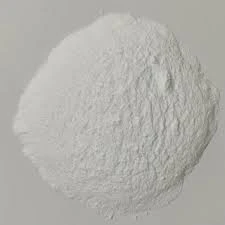Understanding Dimethylurea A Versatile Chemical Compound
Dimethylurea, also known as N,N-dimethylurea, is a chemical compound widely recognized for its significant role in various industrial and agricultural applications. Its chemical formula is C3H8N2O, while its structure is characterized by a urea molecule where two hydrogen atoms are substituted by methyl groups. This simple modification grants dimethylurea unique properties that set it apart from its parent compound, urea, making it an essential component in multiple sectors.
Properties and Characteristics
Dimethylurea is a white crystalline solid that is soluble in water and many organic solvents. Its melting point is around 132 °C, and it has a moderate boiling point, which makes it suitable for a range of applications that require stability under varying temperature conditions. The presence of the dimethyl groups enhances its stability compared to regular urea, allowing it to withstand conditions that might otherwise lead to decomposition.
The compound is relatively non-toxic, which adds to its attractiveness for numerous uses. However, it is essential to handle it with care, as it can still pose risks if ingested or inhaled in significant quantities. Understanding its safety data and handling guidelines is crucial for anyone working with it in a laboratory or industrial environment.
Applications in Agriculture
One of the most notable applications of dimethylurea is in the field of agriculture, particularly as a nutrient source for plants. It is often used as a slow-release nitrogen fertilizer, which is essential for promoting healthy plant growth. The slow-release characteristic of dimethylurea allows for a more sustained nutrient supply, reducing the risk of nitrogen leaching into the groundwater and minimizing environmental pollution.
In addition to its application as a fertilizer, dimethylurea is also utilized in the synthesis of various agricultural chemicals, including herbicides and pesticides. Its ability to form stable compounds makes it a valuable building block in the formulation of these agrochemicals, enhancing their effectiveness and reducing the potential for negative environmental impacts.
dimethylurea

Industrial Uses
Beyond agriculture, dimethylurea is employed in numerous industrial processes. It serves as a precursor in the production of various pharmaceuticals, including certain anti-inflammatory and analgesic compounds. The pharmaceutical industry values dimethylurea for its versatility in synthesizing bioactive molecules that can target various diseases effectively.
Moreover, dimethylurea is used in the manufacturing of resins and adhesives. When polymerized, it forms durable and heat-resistant materials that are essential in construction and manufacturing sectors. The adhesives produced using dimethylurea exhibit excellent bonding strength and resilience, making them ideal for use in automotive and aerospace applications.
Research and Development
The scope of research involving dimethylurea continues to expand. Scientists are investigating its potential applications in various fields, including biochemistry and materials science. Studies are being conducted to explore its use in drug delivery systems, where its properties can be harnessed to improve the bioavailability of therapeutic compounds. Additionally, researchers are looking into the potential of dimethylurea as a foaming agent in certain formulations, providing flexibility and innovative solutions across industries.
Conclusion
In summary, dimethylurea is a compound with diverse applications ranging from agriculture to pharmaceuticals and industrial manufacturing. Its unique properties, combined with its relatively low toxicity, make it a valuable compound in various fields. As research continues to unveil new potential uses for this versatile molecule, it stands to play an increasingly significant role in addressing the challenges posed by modern technology, environmental sustainability, and food security. The future of dimethylurea appears promising, with ongoing innovations and applications that could further enhance its relevance in our daily lives.

